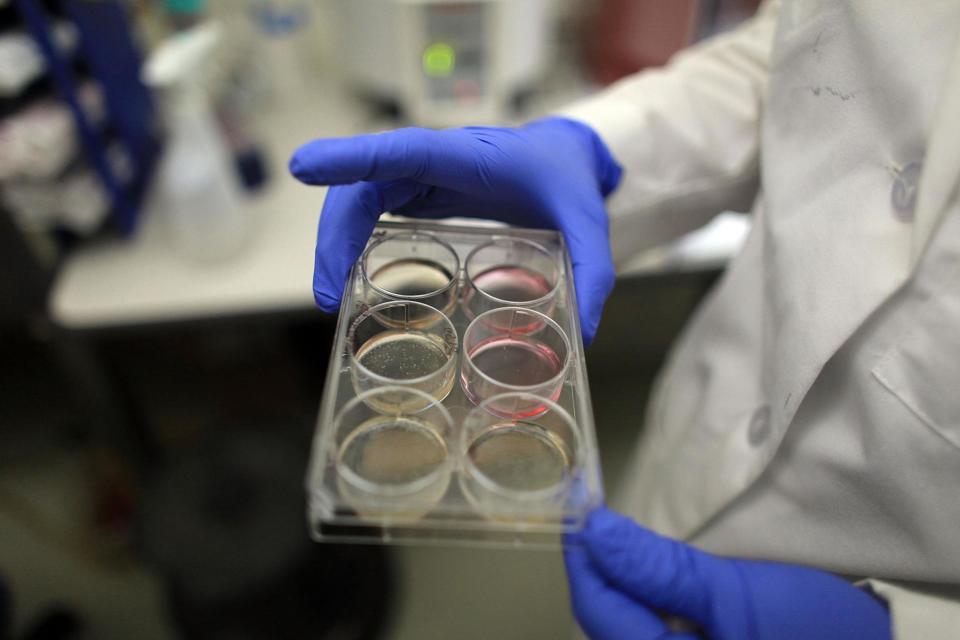Breakthrough in understanding causes of Parkinson's disease revealed

A new clue in solving the mystery of what causes the degenerative brain disease Parkinson’s was revealed today.
An international team led by scientists at Cambridge university found that excess levels of calcium in brain cells may lead to the formation of “toxic clusters” that are the hallmark of Parkinson’s.
An estimated 145,0000 people in the UK have Parkinson’s, which can develop in people as early as their twenties. It typically causes involuntary shaking, problems with movement and balance and memory loss, and is incurable.
Celebrities with the disease include Michael J Fox, Sir Billy Connolly and Neil Diamond, who announced last month that he was quitting touring after being recently diagnosed. Muhammad Ali died in 2016 after suffering from Parkinson’s for decades.
Today’s research, in the journal Nature Communications, found that calcium can bring about an interaction between the internal workings of nerve endings and a protein called alpha-synuclein, which is associated with Parkinson’s.
Excess levels of either calcium or alpha-synuclein may be what starts the chain reaction that leads to the death of brain cells.
The research suggests that drugs developed to tackle heart disease by blocking calcium may also have the potential to fight Parkinson’s.
Claire Bale, head of research communications at Parkinson’s UK, said: “We’ve known for some time that too much calcium or too much alpha-synuclein - the main protein involved in Parkinson’s - causes problems for brain cells affected in the condition.
“This particular study is interesting because it’s the first time research has shown that there may be an important interplay between alpha-synuclein and calcium inside cells, which if disturbed, may cause the damage that ultimately leads to brain cell death.
“Understanding exactly how and why brain cells stop working properly and die in Parkinson’s is still a mystery. While more research will need to be done, this important new clue could be the key to better treatments in the future.”
It is not known why people get Parkinson’s, but researchers think a combination of genetic and environmental factors causes nerve cells to die.
The disease is caused when naturally occurring proteins fold into the wrong shape and stick together with other proteins, forming thin structures called amyloid fibrils. These amyloid deposits of alpha-synuclein, also known as Lewy bodies, are the sign of Parkinson’s disease.
The researchers used super-resolution microscopes to study alpha-synuclein and synaptic vesicles, part of the nerve cells that store neurotransmitters that send signals from one nerve cell to another.
Dr Janin Lautenschlager, the paper’s first author, said: “This is the first time we’ve seen that calcium influences the way alpha-synuclein interacts with synaptic vesicles.
“We think that alpha-synuclein is almost like a calcium sensor. In the presence of calcium, it changes its structure and how it interacts with its environment.”

 Yahoo News
Yahoo News 